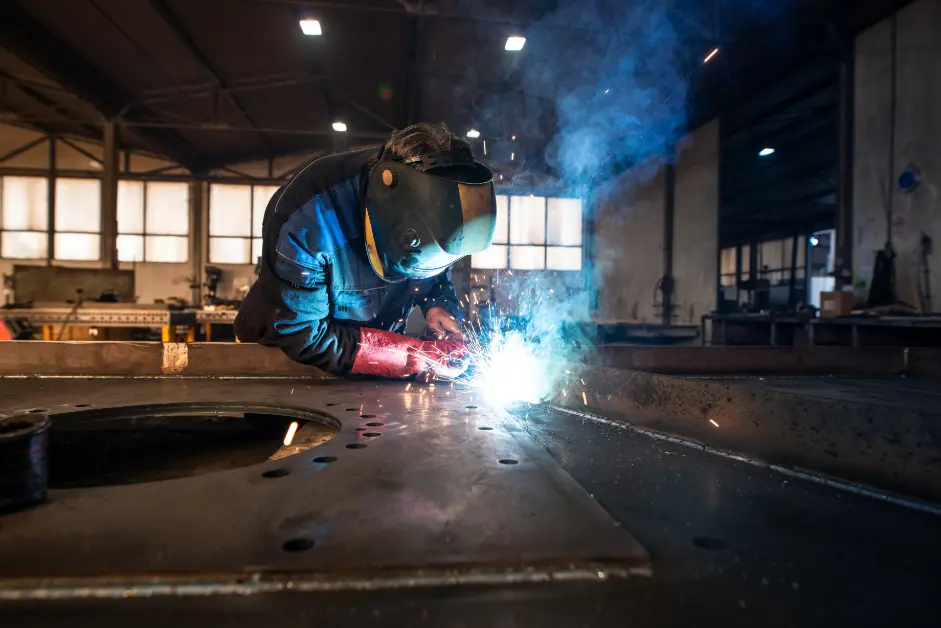Have you ever looked at a car, a bridge, a skyscraper, or even a simple metal gate and wondered, “How was this made?” The answer is: fabrication. Metal fabrication is the process that helps turn plain pieces of metal into useful things — like tools, machines, buildings, and even artwork.
Let’s take a fun and easy journey into the world of metal fabrication, where we’ll learn what it is, how it works, what tools are used, and why it’s so important in our everyday lives.
What Does “Fabrication” Mean?
The word fabrication simply means making or building something. In the world of metals, metal fabrication means turning raw pieces of metal — like sheets, bars, or pipes — into finished products. This could be anything from a metal shelf to a truck body or the frame of a building.
It’s like building with Lego blocks. But instead of plastic, you’re using steel, aluminum, or iron, and instead of snapping them together, you might cut, bend, or weld them.
What Happens During Metal Fabrication?
Metal fabrication isn’t just one job — it’s made up of several smaller steps. Here’s a simple way to understand the most common steps in a fabrication process:
1. Designing
Everything starts with an idea. First, someone — like an engineer or a designer — creates a drawing or a blueprint. This drawing shows exactly how the final product should look and how big it should be. Today, most designs are made using computers (this is called CAD — Computer-Aided Design).
2. Cutting
Once the design is ready, the fabricator cuts the raw metal into the right shape. This can be done using:
Shears (like giant scissors)
Plasma cutters (which use electricity and gas to slice metal)
Laser cutters (which use focused light to cut with precision)
Saws and water jets
Think of this like cutting dough into the right shape before baking cookies.
3. Bending
Now the cut pieces are bent into the needed angles and curves. This is usually done using a machine called a press brake, which pushes the metal to bend it.
Imagine bending a piece of cardboard in half — that’s what happens, but with strong machines and thick metal!
4. Welding and Assembling
After cutting and bending, the pieces need to be joined together. This is where welding comes in. Welding uses heat (sometimes a lot of it!) to melt the edges of two metal parts so they stick together once cooled.
Once all the parts are joined, you’ve got a finished metal product. It might also get screws, bolts, or rivets to hold parts tightly together.
5. Finishing
Finally, the product is cleaned, polished, or painted. Sometimes it’s coated to prevent rust or wear. This step is all about making sure the metal part looks good and lasts a long time.
Types of Metal Used in Fabrication
Fabricators don’t use just any kind of metal. They carefully choose what’s best for the job. Here are a few popular types:
Steel – Strong and durable. Perfect for bridges, buildings, and cars.
Stainless Steel – Doesn’t rust. Used in kitchens, hospitals, and food factories.
Aluminum – Light but strong. Used in airplanes, bikes, and boats.
Copper and Brass – Used in art, plumbing, and electrical parts.
Each metal behaves differently, so fabricators need to know their materials very well.
What Tools and Machines Do Fabricators Use?
Metal fabrication shops are full of amazing machines and tools. Here are some of the most common ones:
| Tool | What It Does |
|---|---|
| Laser Cutter | Cuts metal with light beams |
| Plasma Cutter | Cuts through metal using gas and electricity |
| Press Brake | Bends metal sheets into shapes |
| Welding Machine | Joins metal pieces together using heat |
| Grinder | Smooths sharp edges and cleans surfaces |
| Drill Press | Makes holes in metal precisely |
These tools help fabricators work faster and more safely.
Where Is Fabrication Used?
Metal fabrication is used almost everywhere. Without it, we wouldn’t have:
Cars, trucks, and airplanes
Buildings, bridges, and stadiums
Kitchen sinks, ovens, and shelves
Bicycles, gates, and fences
Tools, machines, and factory equipment
From tiny screws to giant ships — fabrication helps make it all.
Who Does Fabrication?
People who work in fabrication are skilled workers known as fabricators. There are different kinds:
Welders – specialize in joining metals.
Machinists – use machines to shape parts.
Metal workers – do general fabrication tasks like cutting, bending, and shaping.
Sheet metal workers – work specifically with flat sheets of metal.
Some fabricators work in big factories. Others work in small shops or even on construction sites.
Is Fabrication Safe?
Yes — if done carefully. Fabrication uses powerful tools and very hot materials, so safety is super important.
Fabricators wear:
Gloves – to protect hands
Goggles or helmets – to protect eyes and face
Welding jackets – to protect from heat and sparks
Steel-toed boots – to protect feet from heavy metal
Shops also follow safety rules and use ventilation to avoid breathing in fumes.
The Importance of Fabrication
Metal fabrication may seem like a behind-the-scenes job, but it’s one of the most important industries in the world. It helps build the things that keep our world moving.
Without fabrication, we wouldn’t have:
Safe homes and strong buildings
Transportation systems
Clean water systems
Renewable energy sources (like wind turbines and solar panel frames)
Even things like playgrounds and sports stadiums are made using fabricated parts!
The Future of Fabrication
Today, fabrication is becoming more advanced with the help of technology. Computers, robots, and smart machines are making fabrication faster, more precise, and safer.
Some exciting future trends include:
3D printing with metal
Robotic welding arms
AI-powered design tools
Eco-friendly methods that reduce waste
This means the next generation of fabricators will need both hands-on skills and computer knowledge.
Final Thoughts
Fabrication may sound like a big, technical word, but it’s really just the art of turning metal into useful things. It takes creativity, skill, and teamwork to bring designs to life — whether it’s a car part, a kitchen sink, or a tall skyscraper.
If you like building, creating, or figuring out how things work, fabrication might just be the field for you someday.
So next time you walk across a bridge, ride in a bus, or open your refrigerator — remember, there’s a good chance a fabricator helped make it possible.
Want to learn more about metal work, fabrication careers, or how factories make things? Stay tuned for more beginner-friendly guides!
- Contact us at TMTVTS Tech Mech technical training school in Pakistan to get enroll in Fabrication.





